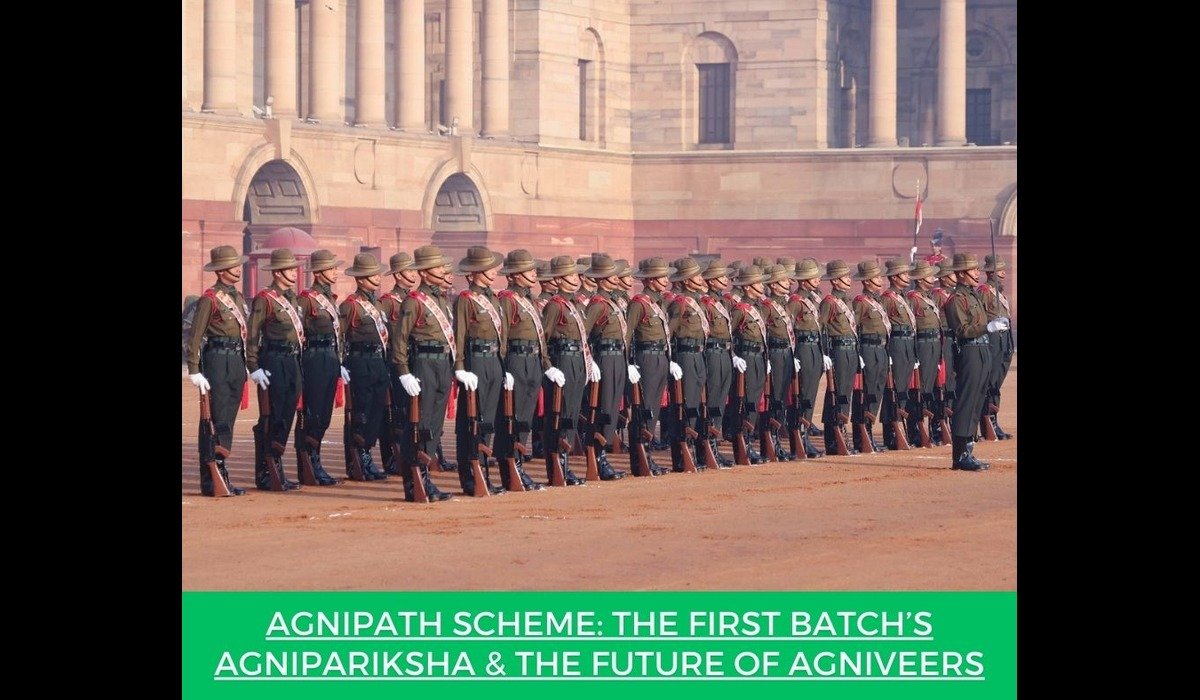
The Agnipath scheme, introduced by the Indian government in 2022, was a transformative step in the recruitment process of the Indian Armed Forces. As the first batch of Agniveers nears the completion of their four-year tenure, the program is set to undergo its first real evaluation. The fate of thousands of young soldiers will be determined as 75% of them transition out of military service while the top 25% secure permanent positions. This article explores the evaluation process, the future prospects of Agniveers, and potential modifications in the scheme.
Understanding the Agnipath Scheme
The Agnipath scheme was launched to recruit young and dynamic soldiers into the Indian Army, Navy, and Air Force. Under this program:
- Candidates are recruited for a four-year tenure.
- After four years, 25% of the batch will be absorbed into the armed forces as permanent soldiers.
- The remaining 75% will be relieved from service with a financial package and opportunities in paramilitary forces and state police.
- Agniveers receive structured training and exposure to military life, discipline, and national service.
The first batch of Agniveers, recruited in 2022, will complete their tenure in October-November 2026, marking a crucial milestone in the evaluation and future direction of the scheme.
Click Here to know more about Agnipath Scheme
Evaluation Process: Who Will Become Permanent?
The selection of permanent Agniveers is not arbitrary but follows a structured evaluation system that spans four years. The key aspects of the selection process include:
- Continuous Performance Assessments: Agniveers undergo evaluations every six months at their respective regimental centers.
- Cumulative Scoring System: Performance in each evaluation cycle contributes to a cumulative score, which is accessible to Agniveers through the Army’s internal portal, ASAAN.
- Multiple Opportunities: Soldiers get two chances to improve their scores during each evaluation cycle, ensuring fairness and transparency.
- Final Compilation: Before the completion of four years, the scores of all assessments are compiled to determine the top 25% who qualify for permanent absorption.
The Army has assured that merit-based selections will be made, considering various factors such as discipline, performance, and achievements.
Factors Influencing Selection for Permanent Positions
Several key factors influence the decision of who gets to stay in the armed forces:
- Battle Casualties and Gallantry Awards: Soldiers injured in action and those awarded for gallantry will be given priority in selection.
- Discipline Record: Agniveers who have been disciplined and consistent in their duties will receive preference.
- Sports and Special Achievements: Those excelling in sports and special skills may receive additional marks.
- Negative Marking for Indiscipline: Any misconduct or disciplinary issues will negatively impact the selection prospects.
Agniveers will be informed about their selection status approximately two months before the completion of their tenure.
Employment Prospects for Those Who Exit
The biggest concern surrounding the Agnipath scheme is the future of the 75% Agniveers who will not continue in the military. To address this concern, the government has taken several measures:
- Reserved Quotas in Paramilitary and Police Forces:
- Several state governments have announced reserved quotas for Agniveers in their police forces.
- Central Armed Police Forces (CAPFs) have also indicated special recruitment provisions for Agniveers.
- Skill Development and Reemployment Assistance:
- The government has launched skill-development initiatives to equip exiting Agniveers with technical and professional skills for civilian employment.
- Partnerships with private companies are being explored to facilitate employment opportunities.
- Financial Package (Seva Nidhi):
- Each Agniveer exits with a financial package of approximately Rs. 12 lakhs, which serves as a transition fund to support education, entrepreneurship, or employment pursuits.
Future Changes and Potential Modifications in Agnipath Scheme
As the first batch of Agniveers approaches completion, discussions about refining the scheme have emerged. While major changes have been ruled out, some adjustments may be considered:
- Leave Policy Revision: Currently, Agniveers receive only 30 days of annual leave, compared to 90 days for regular soldiers. A slight increase in leave allowances may be introduced.
- Extension for Technical Arms: The age limit for technical arms may be extended to accommodate skilled personnel for a longer duration.
- Improved Benefits for Disabled and Martyred Agniveers: The Army has recommended that Agniveers who are disabled in service or martyred receive benefits equivalent to regular soldiers.

Conclusion: The Road Ahead for Agnipath Scheme
The Agnipath scheme is at a crucial juncture as the first batch undergoes its final evaluation. The experience gained from this batch will provide valuable insights into the effectiveness of the scheme, the challenges faced by exiting Agniveers, and the need for refinements. While permanent absorption is limited to 25%, the government’s initiatives to facilitate reemployment will determine the overall success of the scheme.
For aspiring Agniveers, this is a golden opportunity to serve the nation, gain valuable skills, and build a foundation for future careers. As the Agnipath scheme matures, it will play a defining role in shaping India’s defense recruitment and workforce development strategies.
Stay updated with the latest Agniveer Alerts, Results, News, and Updates! 📢 Join our WhatsApp Channel now : Click Here ✅

